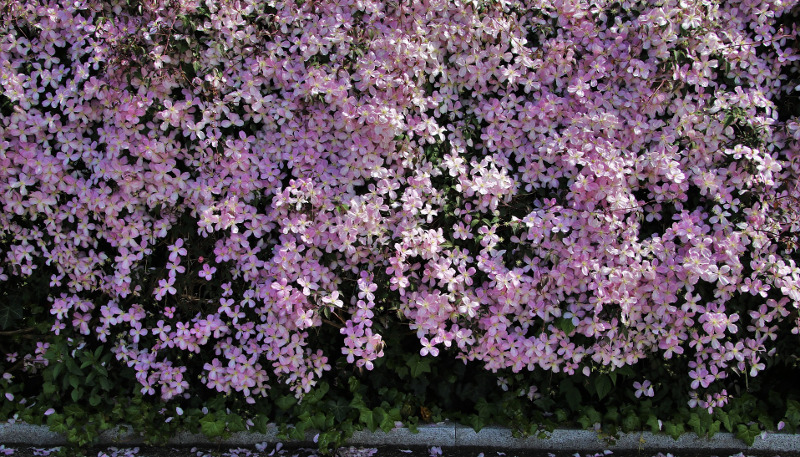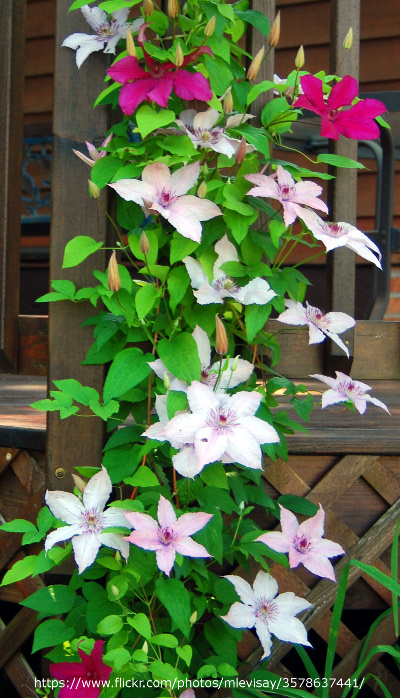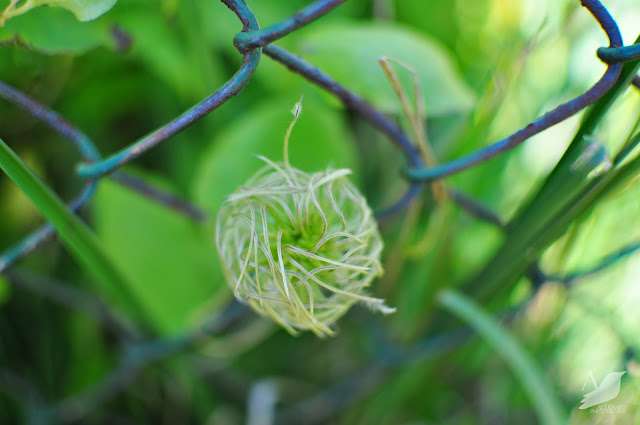Clematis are typically flowering vines that are becoming very popular in the United States. The plants can also be shrubs, but most often when gardeners discuss clematis, they are referring to the climbing vines. The genus is about 300 species within the buttercup family, Ranunculaceae. Other common names for these plants are traveller's joy, virgin's bower, old man's beard, leather flower, and vase vine.
These plants are relatively easy to care for. But planting the correct way is critical to have healthy plants. Read below to learn about the best way to plant clematis.
What You Need To Plant Clematis
- Shovel
- Compost or manure
- Garden spade
- Support for the plant
- Water source

Where to Plant Clematis
Clematis need at least 6 hours of sunlight per day in order to perform their best and produce the most amount of flowers. Try and find an area where the roots will be shaded, but the plant will be in full sunlight. You can also add a layer of mulch to help retain moisture and protect the roots from the sunlight. Some clematis cultivars can grow well in partial shade.
The plants prefer nutrient rich soil that is well drained and prefer neutral to slightly alkaline in pH. Ensure the new hole is dug at least 6 inches deeper than the container or the root ball of the plant.
 Clematis Support & Spacing
Clematis Support & Spacing
Most clematis are vines and need some sort of support to be able to grow. Like other vines, the growing end of the plant will search for something to grow onto.
If it cannot find anything, it will stop growing and eventually die. So make sure to provide some sort of support to climb on the same time you plant it.
The leaf stems of a clematis are not very long. So any support thicker than a 1/2" in diameter will be difficult for the plant to grow on. Some options for support are wooden dowels (typically what the plant will be growing on when you purchase the plant), steel rods, branches and sticks, fishing line, & twine. Trellises and metal fences are usually what you will see gardeners using.
Clematis should be spaced at least 3 feet apart, center on center. This will provide ample space for the plants to spread. If you do have a large area to cover, you might try growing several different varieties next to each other. That will provide several different colors and sizes of flowers, as well as mixing up the bloom times throughout the year. British gardeners will often do this.
Steps To Plant Clematis
Before you purchase a new clematis plant, be sure to have a location picked out that offers support for the vine to grow on. Dig a hole that is twice as wide as the container it currently is in, and at least 6 inches deeper than the current container.
The plants like moisture retentive soil that can drain. We recommend adding in compost or manure to add nutrients to the soil and encourage strong root growth right away. Mix the native dirt in with the compost and prepare the hole for the plant.
Once you have the hole ready to go, position the top of the root ball level with the soil surface. So the base of the plant is level with the dirt around the plant. Fill in the sides of the root ball with the leftover dirt, and pat the soil down so it is firm enough to keep the plant in place.
Thoroughly water the clematis once the dirt is in place. Then add a layer of mulch around the plant to provide protection for the roots, and to help retain moisture in the ground. Water weekly the first year to help get the plant established.
Step 1 - Pick out a good location
Step 2 - Provide support
Step 3 - Dig the hole
Step 4 - Add compost or manure to the dirt
Step 5 - Position the root ball even with the ground
Step 6 - Firmly fill in the dirt
Step 7 - Add mulch and water thoroughly
When to Plant Clematis
The best time of year to plant clematis is in the spring, but you can plant anytime between spring and fall with extra precaution. Try and plant clematis on a mild or overcast day. Later in the day also helps. These precautions help ensure there is the least amount of stress on the plant during the transition from the container to the ground or planter.
It is best if you avoid very hot and sunny days, as that will put the most stress on the plant and makes it harder to water the plant. If you do plant during a hot day, consider adding extra water to the plant or watering more than once the first day or two.
Transplanting Clematis
You should never transplant or divide the plants in the spring. Do this in the summer or fall during an overcast day. Moving clematis from one spot to another in the spring could potentially kill the plant because they are particularly susceptible to any root disturbances at that time. Only transplant or split the plants if the clematis is a strong grower and a well established plant.
When digging up the plant, be sure to dig really deep so you grab as much as the root ball as possible. When dividing clematis, remove the plant from the support and trim back each stem to have around 4 buds.
Once the plants are dug up or divided, use the same steps as above. The only difference is the timing of the year. Follow the same instructions for repotting clematis or if you are growing new plants from cuttings.
Plants We Recommend
 |
Author Chris Link - Published 2-13-2020 |

